One mega-region continues to pad its lead. Another rises to the top for the first time. And yet another returns to a familiar spot.
That’s the story of this year’s No. 1 Top Metros for corporate facility investment projects tracked by Conway Analytics across three population tiers: Chicago, Illinois; Dayton-Kettering, Ohio; and Sioux City, Iowa-Nebraska-South Dakota.
But the even bigger news may be lurking just below their No. 1 rankings: Twelve of the 32 metro areas in the top 10s (two extra due to ties) were not even in the top 10s the year before.
The biggest gainer was Baton Rouge, Louisiana, which this year comes in as the Tier-2 runner-up with 35 projects after not even making the top 10 last year. The new kids in town — though certainly no strangers to economic development success — include the following:
Tier 1
6 Austin-Round Rock, TX
7 Phoenix-Mesa-Scottsdale, AZ
9 Indianapolis-Carmel- Anderson, IN
Tier 2
2 Baton Rouge, LA
9 Montgomery, AL
T10 Chattanooga, TN-GA
T10 Greenville-Anderson- Mauldin, SC
Tier 3
3T Midland, TX
5 Valdosta, GA
6 Lima, OH
7T Auburn-Opelika, AL
7T Jackson, TN

The arrival of Outdoorsy in Austin illustrates the momentum in these newly arrived top 10 communities. One of 24 local tech companies collectively raising more than $400 million in January alone, the national RV rental company in 2018 committed to relocate its HQ to Austin from San Francisco, and has moved into the 1300 Guadalupe building downtown. The company’s raise in January was $50 million, bringing its grand total to $80 million, as Outdoorsy adds more than 30,000 rentals to its network, expands internationally and hires more people in Austin and at a new global call center in nearby Round Rock.
Outdoorsy’s mission is to mobilize the 16 million underutilized, idle RVs in the world: “Never Idle is our rallying cry. It’s as much for the owners of RVs sitting idle in driveways as for the renters who want nothing more than to explore this country the way it was meant to be explored: along the roads that connect us.”
For co-founders Jeff Cavins and Jennifer Young, all roads led to the center.
“We started Outdoorsy in California in 2015, but over time, we knew that we needed to be closer to our customers, which meant being in the middle of the country,” explains Cavins. “We initially looked at Salt Lake City, Boulder, Denver, Nashville, Charlotte, and San Diego. And then we looked at Austin, and the whole team fell in love at first sight.”
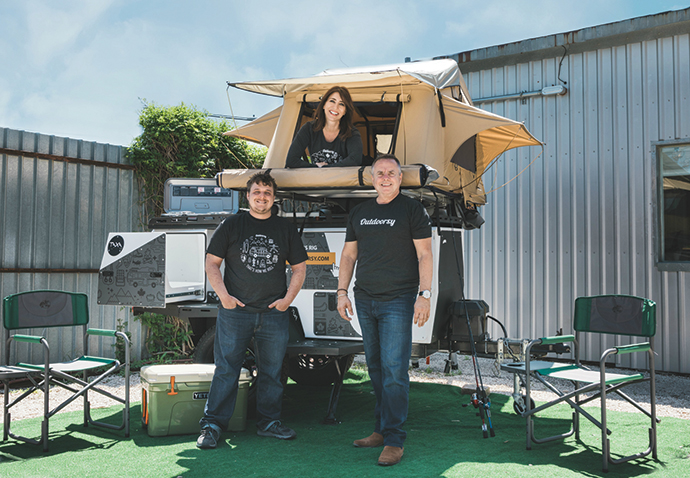
Here he can’t help but be on brand.
“Austin is very Outdoorsy — which obviously was perfect for our brand culture — with lots of greenbelt space for hiking and camping, and not to mention that so many of our customers are in Texas,” Cavins says. “We also later learned how business friendly it was, which was an added bonus for us. So we moved Outdoorsy from California to Texas in 2018, and it’s been a great fit — the creative nature of people in Austin, the outdoor activities and the youthful energy are the perfect home for us.
“In comparison to Texas, California can be a difficult state when it comes to taxes, and it can be an unfriendly environment for businesses,” he continues. “It also provided a challenging quality of life for our young employees. In looking at Texas, we’ve found that the state has a respect for family values, life and liberty and a non-intrusive government. There is a freedom here that you feel right away, and it’s not only invigorating, but also inspires investment and commitment to the community. Austin is also right in the middle of the country (not to mention the warmer and more southern part of the country), and we found many of our customers love being here as well.”
Outdoorsy is not the only West Coast tech firm to find Austin amenable: Apple has broken ground on its new $1 billion, 3-million-sq.-ft. (278,700-sq.-m.) campus, not far from where the company already produces the Mac Pro. The campus will initially house 5,000 employees, with the capacity to grow to 15,000, and is expected to open in 2022.
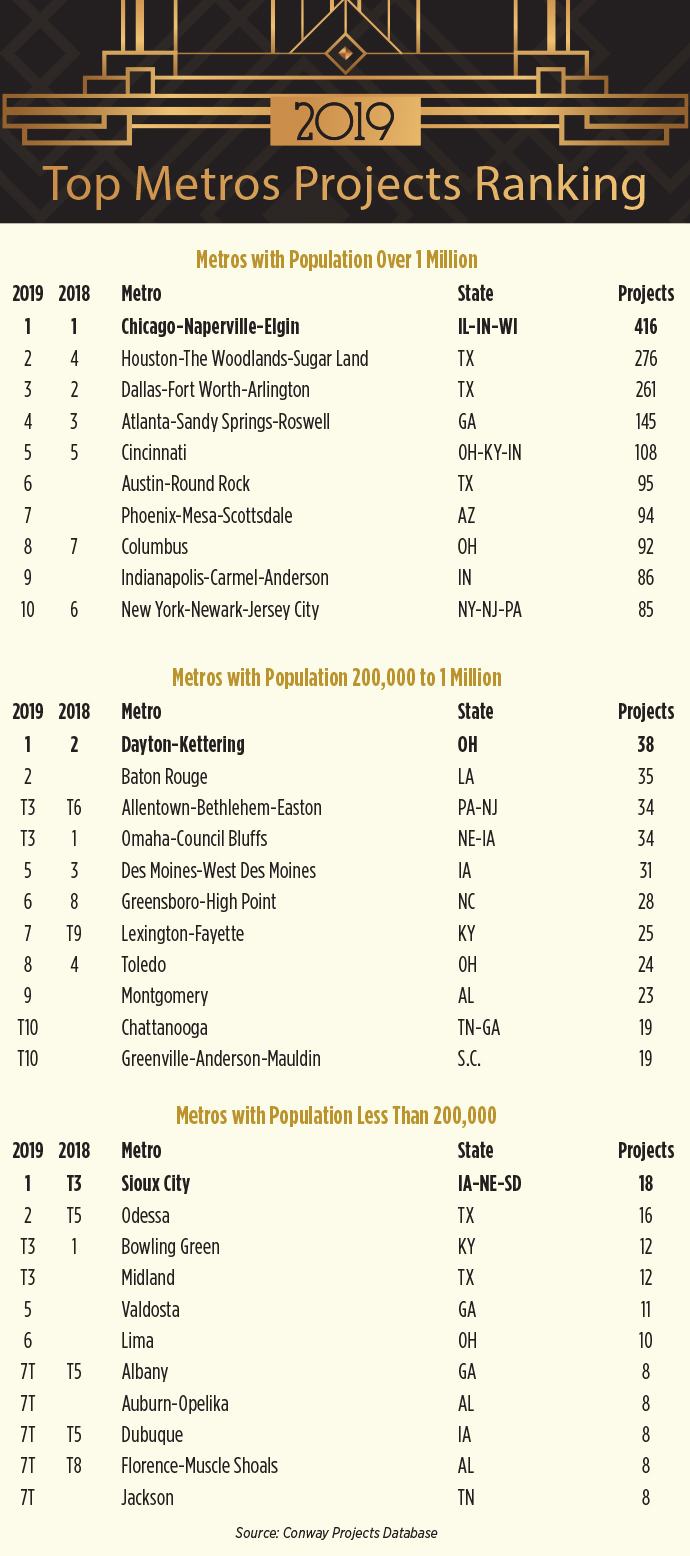
Chicago: Talent, Tech and Equity
“Chicago is winning projects because of talent,” says Deloitte Global Location Strategy Leader Darin Buelow. “In spite of the higher cost of being in Chicago and in spite of the state budget deficits, Chicago being a magnet for talent is overwhelming a lot of other factors.”
Young Midwestern college graduates moving to the big city on the lake is more than a familiar trope. It’s the lifeblood of a metro area that continues to be fueled by tech growth from the likes of Google, Gartner, and San Francisco-based Affirm, which in February pledged to hire 100 at a new office in EQ Office’s 350 North Orleans building in Chicago’s River North neighborhood. Google Chicago has doubled in size from 600 to more than 1,200 employees in the past five years. Altogether more than 2,000 jobs are being created by some 20 tech companies.
Top Firms Topped by Tech in Top Metros
It will surprise no one to learn that the leading corporate investor among the more than 2,000 projects we tracked across the 32 Top Metros was Amazon, with 26 projects. Microsoft tallied six investments, including several at its data center campus in Greater Des Moines. Google accounted for four projects, as did Kroger, including its automated warehouse projects with Ocado. The appliance and aviation companies of GE, and the parts, automotive and aviation companies of Honda also accounted for four projects for their respective corporations. Raytheon tallied four projects as well, all in north Texas, including a new $200-million campus in McKinney. A recent study pegged the company’s impact on the region at $4.8 billion.
The world of apps and e-commerce also extends to other neighborhoods, such as the Midway Business District on the city’s Southside, where World Business Chicago (WBC) President and CEO Andrea Zopp joined Chicago Mayor Lori E. Lightfoot and leaders and staff of Farmer’s Fridge last September to cut the ribbon on a new 170-employee facility. The company expects to double the number of kitchen employees by the end of 2020 to fuel the company’s rapid expansion, hiring many from surrounding neighborhoods.
The Chicago-founded company pioneered touchscreen technology and proprietary software to create a seamless customer experience while minimizing food waste in maintenance-free, low-energy “Fridges” that the company says have become a go-to amenity for businesses across multiple regions.
“As a Chicago transplant, I am deeply grateful to this city for its incredible support of entrepreneurship,” said Luke Saunders, founder & CEO, noting the company’s intent to double its kitchen headcount by the end of 2020. “Based on the powerful local network of talent, resources, mentorship, and investment, we’ve been able to expand Farmer’s Fridge over the past six years from a single location to more than 350 Fridges. Our company has grown from a single employee to 250 people working together with a common goal of making fresh, healthy food more accessible.”
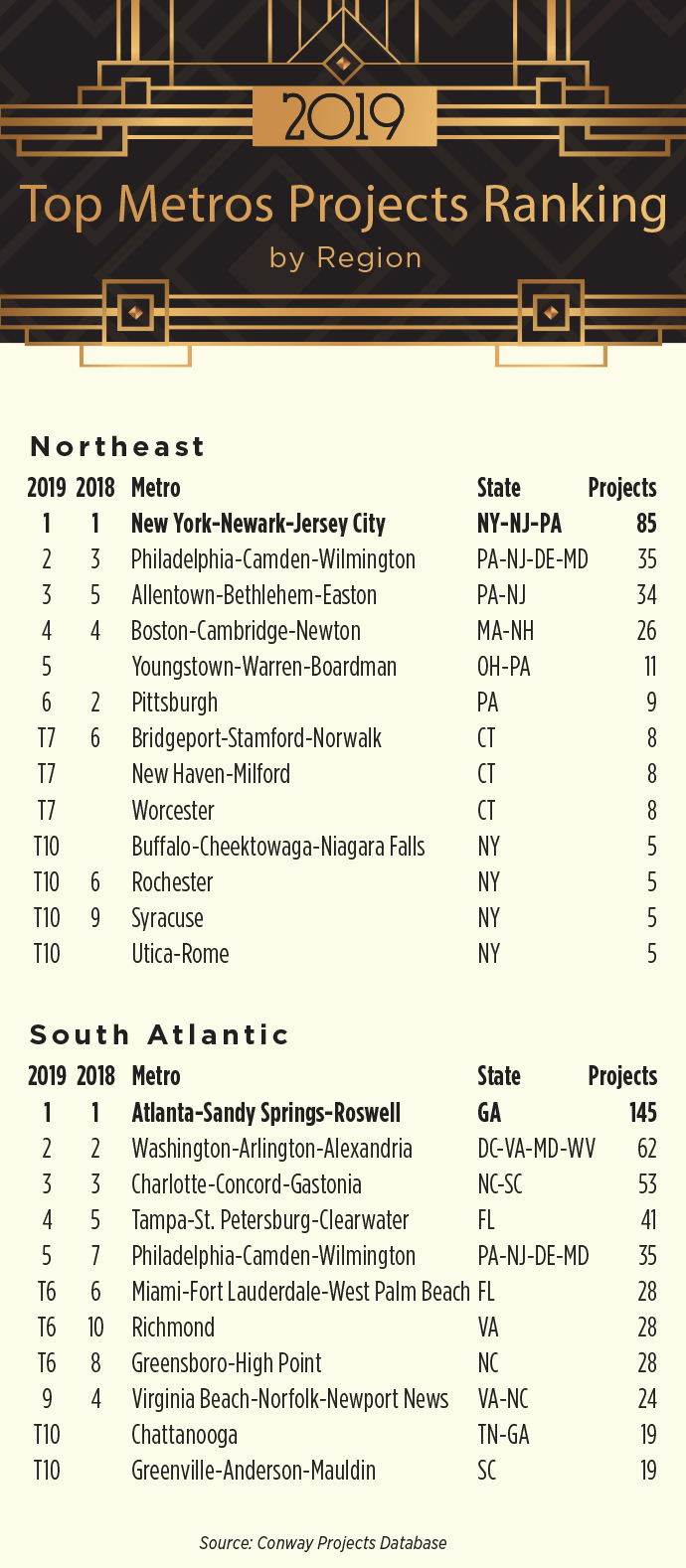
Reforms Don’t Mean Retreat
Those words resonate with city leaders intent on spreading the wealth of corporate investment across more neighborhoods. Tax-increment financing districts have been the city’s go-to tool for many years: TIF allows municipalities to allocate property tax growth within designated TIF districts toward local needs involving economic development, public infrastructure, schools, affordable housing and other uses. Now reforms to TIF will introduce new levels of transparency, accountability and equity to the city’s 136 TIF districts.
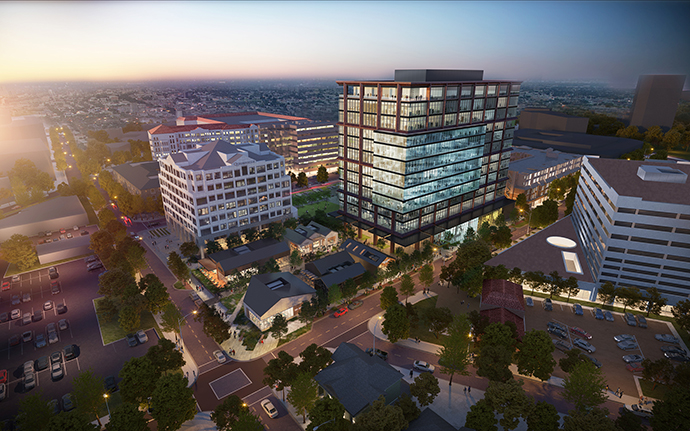
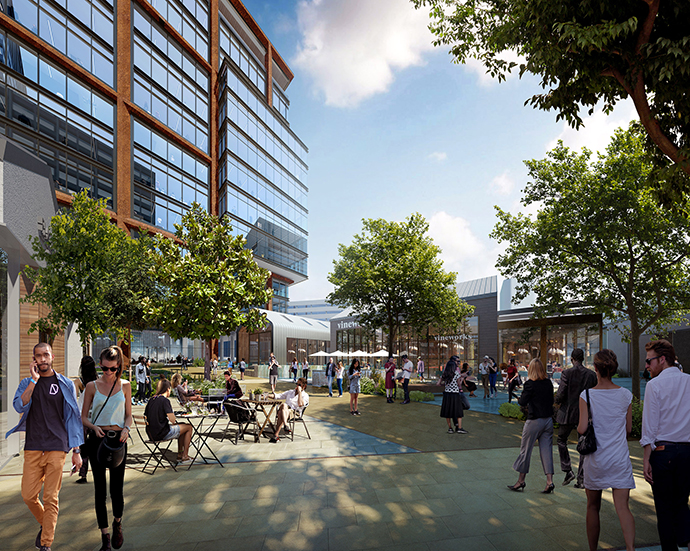
“For too long, the city’s TIF spending decisions have occurred in the shadows,” said Mayor Lightfoot when the reforms were announced in February. “With our reforms, we are bringing a new level of transparency to the way the city spends precious taxpayer dollars, while holding private recipients of TIF dollars accountable to higher standards during the review and approval process. As I have said from the beginning, it is imperative that we use these limited resources responsibly in order to ensure we bring equity and economic development to the neighborhoods that need it most — exactly as TIF law is intended to do.”
Mayor Lightfoot has also made equitable investments for neighborhoods a top priority. Last year, her administration launched INVEST South/West to marshal resources toward 10 neighborhoods on Chicago’s South and West Sides. The City will align more than $750 million in public funding over the next three years to re-activate neighborhood cores and provide coordinated investments.
“We’ve lost population on the south side of our city, and Mayor Lightfoot is laser focused on trying to create thriving neighborhoods that people want to come back to,” says the WBC’s Andrea Zopp. “From the years when we were really not investing in communities, we lost close to 200,000 African-Americans, clearly because of lack of opportunity. So we have to rebuild those neighborhoods. We’re committed to help make that happen.”
In an interview, Deputy Mayor of Economic and Neighborhood Development and Chair of the TIF Investment Committee Samir Mayekar says the TIF reforms are welcome, and lay down a foundation for growth. Will companies balk? “Ultimately, what companies care about is wanting an environment where economic development and growth are priorities,” he says. “The TIF reforms are very much in that vein.” The move from an individual transaction-based system to more systemic transparency will appeal to companies, he says, because “businesses are very much in favor of transparency, especially when it comes to how tax dollars are spent.”
The WBC’s Andrea Zopp agrees, noting that “it’s important that we have a lens of equity and transparency. One of the biggest challenges of TIF is people don’t feel like they understood how it worked. How can we best use these dollars and drive economic opportunities in areas where there has been underinvestment? There was a lot of pushback from residents and media around large developments getting significant TIF dollars … there needs to be transparency about how that happens and the reasoning behind it.”
TIF supports workforce programs and infrastructure primarily. Mayekar expects TIF deal volume will stay steady. It will simply be going through a review process just as any business would with its strategic investment plan, contextualizing the project within a given area’s economic development plan. “You continue the velocity of the deals that are happening, but you do it in a way sensitive to the needs of the community,” Mayekar says. “That’s the point of TIF, right? The whole point is spurring catalytic development.”
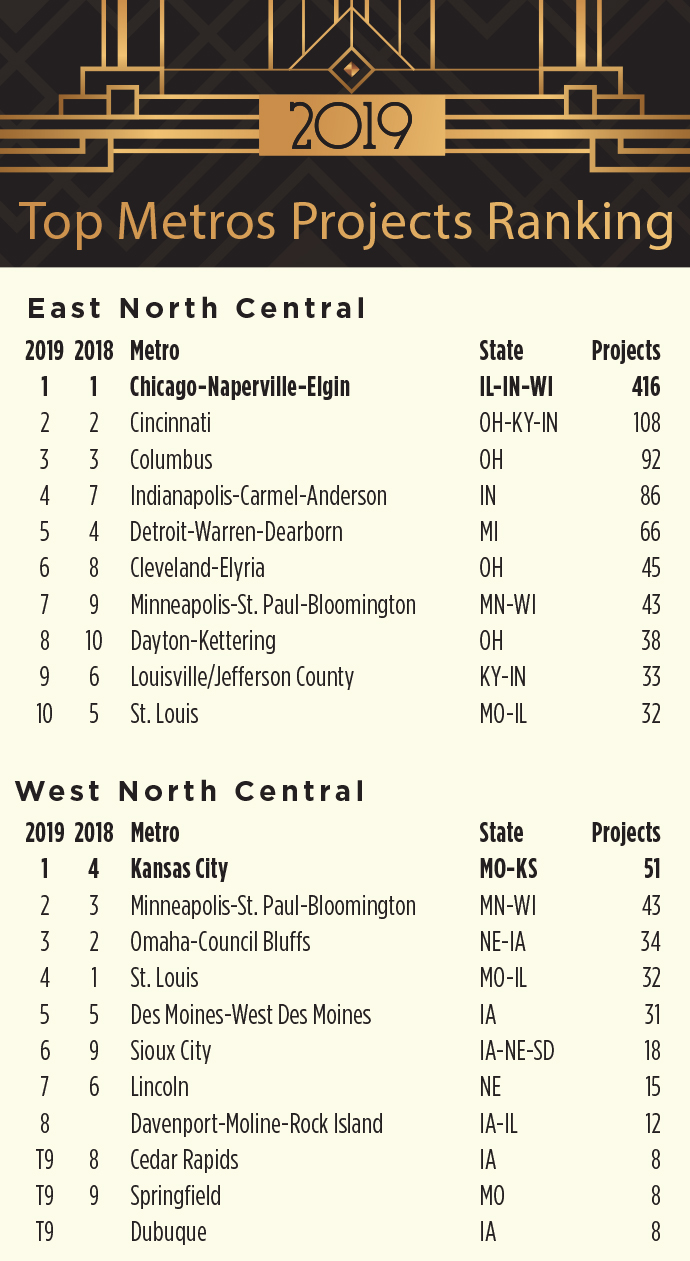
Uber Growth
Many of those TIF districts overlap with Opportunity Zones, bringing new layers of true opportunity to those same neighborhoods. Demonstrating the corporate largesse and philanthropy that are almost Chicago’s trademark, Fifth Third Bank in January announced an equity investment of approximately $20 million in Qualified Opportunity Zones in Chicago, aligning with the INVEST South/West initiative.
“What’s exciting for Opportunity Zones in Chicago is that the types of deals we need involve a lasagna of financing layers,” says Mayekar. “Between TIF and Opportunity Zones, you are able to piece together hose pieces of that financing stack that will be incredibly positive for Chicago and for growth.” In addition to aligning with INVEST South/West, the OZ activity is catalyzing private capital mobilization too, he says, from such prominent corporations as BMO Harris, Starbucks and Fifth Third. It’s part of the broader environmental, social and governance (ESG) and corporate social responsibility (CSR) movement among institutional investors and multinationals, including the recent Business Roundtable commitment to focus on stakeholders more than shareholders.
“We sense that appetite in our corporate community,” Mayekar says, something that goes all the way back to when companies stepped up to rebuild after the Great Chicago Fire. “The nexus and sinews between companies and the community are so embedded in our ethos, and make Chicago a special place. Companies see this is an ecosystem where businesses are focused on stakeholder value.”
Asked to spotlight a particular project from the past year, Mayekar points to Uber Freight’s decision to come to the city’s old post office building, where Pepsico and others have been part of what he calls “one of the most successful rehabilitation efforts in the country.” He says his team engaged directly with the CEO of Uber as well as with Lior Ron, who returned from co-founding Otto to head up Uber Freight.
“Based on what their team members were seeing in terms of how important Chicago was to their business and growth, you had a sense they wanted to be growing here,” Mayekar says. “Having a hiring pipeline is critical,” which is why the company and area leaders are engaging with the Chicago Cook Workforce Partnership going forward.
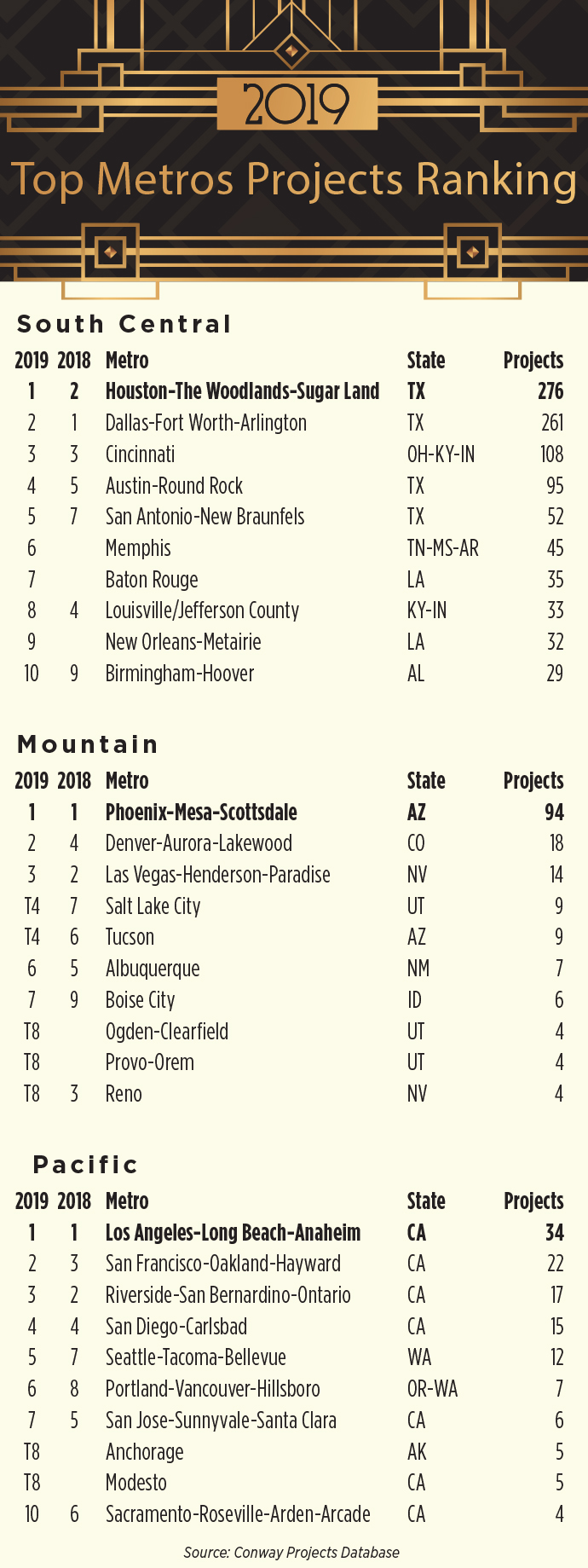
Refurbished Gateway
Zopp says the Uber Freight project shows how economic growth can drive real change and improve cities. She describes the old post office as “this big, hulking, empty building over one of our main highways coming into the city,” closed for decades, and at one time a plant for making Sears catalogs.
“It’s a doorway to the downtown area,” she says. “We’ve been working to develop it for a while. The Rahm Emanuel administration got the ball rolling with a developer who convinced Walgreen’s to move a large satellite office there for its digital team, with 1,800 employees. That led to a number of other companies following their lead, including Home Chef, Ferrero Candy and Kroger’s 8451 data analytics subsidiary. “So you have this incredible energy there now,” she says. “It’s amazing. Now it’s opening up the whole area around it, right by the Willis Tower. It’s a powerful example of why we work so hard.”
A new economic development strategy will focus on the four broad sectors of transportation and logistics; technology; healthcare services and life sciences; and tourism and hospitality, all backed by the region’s traditional strengths in professional services, food production, and manufacturing.
Among the trends pleasing Zopp and her economic development colleagues is the broad scope of the region’s tech community, encompassing fintech, entertainment and cybersecurity, among other niches. Among the thriving firms are Relativity, Snapsheet and SpotHero. In some cases, “the founders were raised here, went to the Coast, grew their companies, but want to come home, because it’s more cost-effective for their business,” she says. In other cases, tech giants discover the same dynamic. “Google finance moved their whole finance team here, and they’ve expanded to an additional building,” Zopp says, “and Facebook expanded too.”
All communities are challenged with identifying talent in today’s low-unemployment environment, but Chicago is known for its talent influx. Cue the trope about post-college life. “We’re at the top for Midwest colleges in terms of draw for computer science graduates,” Zopp says. “Talk to the founders. They are finding talent.”
Texas Triangle Triumphs
Tenants continue to fill office and industrial space throughout the DFW market, which encompasses 12 counties and more than 60 municipalities, more than a dozen of which exceed 100,000 in population. Among the billions going there now to projects counted in 2019 or about to be counted for this year:
Gulfstream Aerospace will expand its operations by building a new $35 million service center at Fort Worth Alliance Airport. The facility is expected to open by the fall of 2021 and will create approximately 50 new jobs. Approximately 150 to 200 of Gulfstream’s 230 Customer Support employees at Love Field are expected to relocate to Alliance, about 35 miles away, while about 30 to 80 employees will remain at Love Field to continue to provide on-site and transient operators with maintenance and service. Gulfstream’s midcabin aircraft completions business in Dallas, which includes about 350 employees and five hangars, will remain at Love Field. More than 50 Gulfstream aircraft are based in the Dallas-Fort Worth area.
“Alliance Airport is a great location,” said Derek Zimmerman, president, Gulfstream Customer Support. “It is an established airport for business aviation operators, has an outstanding infrastructure and is appropriately sized for our operations. It is also the home of a growing aviation school, which will help us continue to develop both new and existing employees.”

Some of the fastest growing include Frisco, McKinney, Richardson, Irving and Allen, which just welcomed a corporate HQ from Highlands Residential Mortgage and has seen a 36% increase in financial services jobs over the past three years. Medical device firm E4D was among several firms that just leased major space at Jackson-Shaw’s Parc NorthEast development in Richardson.
Mike Fratianni, just named managing director of construction for Lendlease’s Americas business, previously served as president and CEO of Indianapolis-based Hunt Construction Group and COO of AECOM Hunt. He has contributed to a variety of notable projects in metros across the nation, and therefore has insight into where the action is, and where projects get done. Why not start with Texas, home to three of our top 10 Tier-1 metros and two of the top 10 Tier-3 metros.
“Texas was a terrific market for us,” he says of his years with Hunt. That’s likely to continue with his new gig at Lendlease, which concentrates on large gateway cities. He notes that all three Texas Triangle metros of Dallas-Fort Worth, Houston and Austin always have a steady flow of work.
“Dallas is a market that had a bit of everything, from large work like we liked to smaller things like a steady stream of education,” Frattiani says, noting that the state has done a solid job of keeping up with its transportation and airport infrastructure. “Houston went through huge growth as a result of Katrina. I always saw Houston as a wonderful large project market for us, with a tremendous healthcare corridor there. Austin always has a good mid-market, steady churn, with a lot of hotels and residential, and a young, vibrant downtown that attracts a lot of young professionals. It’s been steady as well. There are always billions of dollars of work being placed annually in Texas.”
As for the number of Midwestern metros on our list, he says, “We’ve done a fair amount of work in Ohio, and Cincinnati and Columbus always seems to attract attention and growth. Those are the areas that seem to be desirable to people. Indianapolis over the years has made a concerted effort to improve their downtown from the perspective of making it more attractive for living — it’s always had the business side. Those efforts are really starting to pay off now. And they’ve had a fair amount of expanding around the city.
“A lot of people say the Midwest is great for raising a family, and I think that’s attractive for some,” he says. “The cost of living is certainly very attractive too. Those things are coming together and helping those Midwest cities see more promise.”
Dayton Gets It Done
Among the growing companies in No. 1 Tier-2 metro Dayton-Kettering, Ohio, were Abbott Labs, Crocs, GM, Cil Isotope Separations, Heraeus Precious Metals, GE Aviation Systems and Conagra. Their number also includes advanced logistics technology firm VyrtX, which in January announced it was uniting with Connecticut-based Aquiline Drones to deliver the world’s first high-speed drone delivery system for human organs. Why? Because only 30% of the 114,000 people in need of organ transplants will receive their life-saving surgery this year. One major reason is a cumbersome and complex transport system.
“Currently, there is a 25% discard rate for unused human organs because they cannot physically get into the hands of the transplant surgeons in time before the window of opportunity,” said VyrtX CEO Dalton Pont. “When every second counts, UAVs propose an ideal solution to move an organ quickly, to where it needs to be safely, securely, and medically sound.”
Such innovation is a hallmark of the Dayton economy, driven in part by its industrial heritage and in large part by the presence of Wright-Patterson Air Force Base. VyrtX is already working with Dayton’s Air Force Research Laboratory (AFRL), Ohio’s UAS Center and the Springfield Unmanned Aircraft Systems Center, as well as all four of Ohio’s Organ Procurement Organizations. Together, they aim to develop an “air corridor” across the state that would facilitate the country’s quickest transportation of organs. “We want to develop a highway system in the sky because that’s how people drive and how things move,” said Pont. “Ohio will be the first state in America to do this, and with Aquiline Drones, we hope to make it happen very soon.”
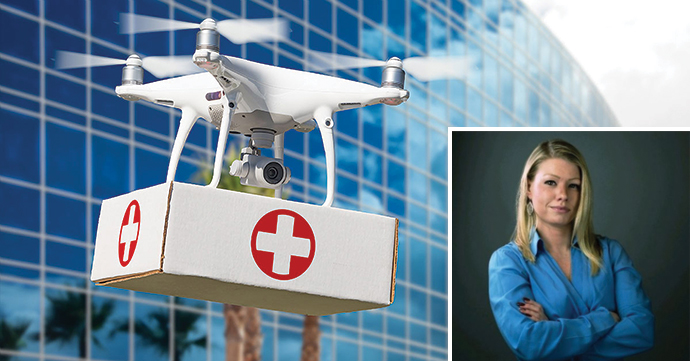
In a group interview the week of the announcement, the partnership’s leaders spoke with Site Selection about why Dayton makes sense.
“We picked Dayton and Ohio for a couple of reasons,” says Alice Cummings, president and COO of VyrtX. “It’s where our offices are headquartered. It’s a fantastic area for aerospace innovation. There is also quite a bit of healthcare. We’re looking at marrying the two together, so there’s no better place. And the vision of the UAS Center was aligned with where VyrtX wants to go.”
She says UAS work in these early stages is all about risk mitigation, and the city of Springfield is an important part of the equation, as it works to develop an unmanned systems center that feeds into the Dayton region.
Command General of Army Reserve Aviation Command U.S. Army Brigadier General Jami Shawley said the area not only supports innovation, but collaborates well with other regions and states working on advancing UAS technologies. “It’s all about collaboration for national airspace,” she says. The Ohio Unmanned Aircraft Systems Center and AFRL began testing at the Springfield-Beckley Municipal Airport last year after the FAA confirmed that new SkyVision technology developed in collaboration between AFRL and the State of Ohio safely, accurately, and effectively allows drones to detect and avoid other aircraft while in flight.
Pont notes that VyrtX was launched in the atmosphere for innovation that characterizes Dayton, starting with Ohio Third Frontier grants to integrate and test IP from the AFRL, which VyrtX now has exclusively licensed. But the teamwork doesn’t stop there. “We were awarded a University of Dayton capstone team,” he says. “It’s our 15th semester of working with them.”
“We’ve built a bit of a community in Ohio,” says Cummings. “Aquiline services and infrastructure will bring our software and systems to life. We will build this highway in the sky for Ohio.”
Tier 3 in Size, No. 1 in Your Heart
The tri-state metro known as Siouxland returns to the top of the Tier 3 rankings this year thanks to investments from the likes of MCI, which last year decided to move its Mass Markets contact center operation back to Sioux City, Iowa, across the street from the Sioux Gateway Airport. MCI will operate multiple MCI operating companies from the secure enterprise 50,000-sq.-ft. (4,645-sq.-m.) facility.
“The new site and multi-brand location are a strategic move by MCI to accommodate current and future growth,” said Anthony Marlowe, MCI CEO. “As an organization, MCI grew by a factor of four times the last few years via organic and inorganic growth, and we are bringing in hundreds of new jobs to the Siouxland market. The economy is on fire.”
The additional capacity of the new location will allow MCI to scale the Sioux City location to between 400 and 500 employees in 2020.
Ingredion in 2018 purchased a soy processing facility in South Sioux City, Nebraska, and now has made significant capital investments to transform the site to produce pulse-based protein isolates. It’s a mirror of a similar investment made in Saskatchewan. “We’ve identified plant-based proteins as a high-growth, high-value market opportunity that is on-trend with consumers’ desire to find sustainable and good tasting alternatives to animal-based proteins,” said Ingredion’s president and CEO Jim Zallie.
Food and nutrition are central to Siouxland’s economy, including a giant CF Industries fertilizer operation, an equally massive Seaboard Triumph pork processing facility and the prodigious Interbake Foods cookie factory, among others.
You have to have containers for all those products. And that is driving its own wave of investments.
Among them is Sioux City Kenworth $5.5 million site in Sioux City, Iowa. “We see great things happening there, and in the region, and even greater potential for future growth,” said Bill Rush, dealer principal of Sioux City Kenworth, when the project was originally announced in 2018, more than doubling the space the company had occupied at its previous location.
In North Sioux City, South Dakota, last year, the North Sioux City Economic Development Corporation announced the sale of acreage in Flynn Business Park to Big Frig, a company founded in the area by Brock Hutchinson to make high-quality, vacuum-sealed tumblers as well as high-quality rotomolded coolers. “The business climate in North Sioux City and the state of South Dakota, talented workforce and partnerships with the NSCEDC, city and state were all important factors in making this decision,” Hutchinson said last year. He founded the company in order to challenge high-end cooler and tumbler makers with stratospheric price points with “products that would perform as well as (if not better than) the big names in the market, without the price tag.”
“North Sioux City is a great place to have a business,” he tells me in an email. Among the reasons is a location in South Dakota where there is no corporate or state income tax. Also helping the area make its case, he says, are “close proximity to the Interstate, and a the local city council and economic development groups, who are very forward-thinking and open to helping new businesses any way they can.”
While the area is known for its Sioux Gateway Airport, the Gateway many associate with Siouxland is the former Gateway Computers. For years the giant complex with its Holstein paint job stood in North Sioux City after the company, which once employed 6,000 at the site, was purchased and its operations closed years ago. Various investors and occupiers have come along since then, but now a major presence has landed in the form of IT and cybersecurity technology firm Sterling, which has moved its new corporate headquarters and distribution operations into 189,000 sq. ft. (17,558 sq. m.) of the massive site.
“We see our new headquarters as an investment in our employees,” said Brad Moore, President and CEO of Sterling. “They are the backbone of our business, and this new campus allows us to enrich their work experience, champion our Midwest roots and chart a path for the future.”
Investor Gerard Keating purchased the entire 750,000-sq.-ft. (69,675-sq. m.) campus and 77-acre (31-hectare) site off I-29 in January 2018. In a news release before the year was even over, his organization noted that “in less than 90 days from his purchase, Keating sold four of the five buildings to three leading local companies” and that the campus was bustling with people “enjoying the once dead climate-controlled walkways, ignoring the cold, outside weather.” Occupiers include Pella Windows & Doors, Connelly Development and Royal Canin pet foods. Then came Sterling’s purchase for their 200-plus-employee HQ.
“Great people. Great location. Booming national economy,” Keating said at a celebratory luncheon, noting that he “knew the Siouxland metro was host to a strong business community but was happily shocked by the number of industrious companies based here who compete daily for business throughout the USA.” Announcing the development of a major logistics facility, Keating said that along with the professional fulfillment of working with the people of the Siouxland metro, it is the peace he finds most satisfying when he sees the Missouri River and surroundingings each time he flies into Sioux City and drives to his family home overlooking the Niobrara River north of his hometown of Atkinson, Nebraska.
Apparently, there are Gateway cities of all kinds, including gateways to home.

